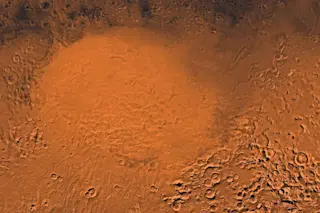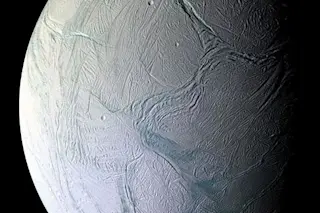Today, water on mars is locked into ice deposits or held in deep underground lakes. But, water once flowed across the planet’s surface, and researchers have found further evidence of its presence on the Red Planet.
A new study, reveals that the Hellas impact basin on Mars once contained a number of ephemeral lakes, or lakes that are usually dry but fill up with water for brief periods of time.
Located in the Red Planet’s southern hemisphere, the Hellas impact basin’s northeastern rim had many of these temporary lakes throughout Mars’ history, say researchers from the SETI Institute. The depressions were filled with water from a variety of sources, they say, including groundwater, snowfall, rivers and streams.
Known as paleolakes, these ancient Martian lakes were active when Mars’ climate was drastically different than it is today. One of the paleolakes is almost completely filled with smooth sediment, the researchers found, ...














